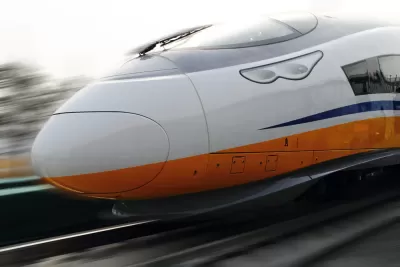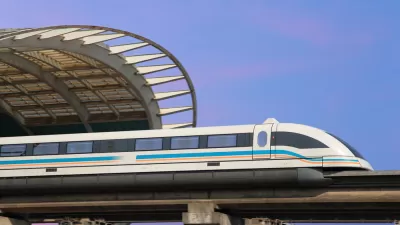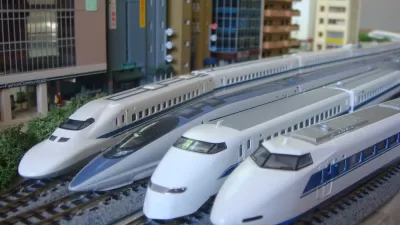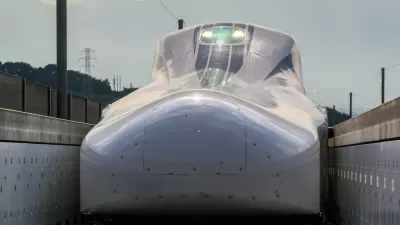The high-tech, high-speed rail system is ultimately planned to run from D.C. to New York.

Luz Lazo at the Washington Post delves into a new environmental report on the proposed Northeast Maglev line from Washington, D.C. to New York.
The report deals with the first leg of the system, a planned 40-mile route from D.C. to Baltimore. One notable update is that project officials have identified the Mount Vernon Square area as the possible end point on the D.C. side. Multiple locations are still under consideration on the Baltimore end, including Camden Yards in the Inner Harbor and the Cherry Hill neighborhood in South Baltimore. Lazo writes:
"The Cherry Hill site offers opportunity for development in an area that hasn’t seen much investment and would be more easily accessed by riders getting to the station by car because it is less congested than downtown. The site would have a direct connection to the Maryland Transit Administration’s Cherry Hill light-rail station, and project officials say there is opportunity for a shuttle service to downtown as well as a water ferry to the Inner Harbor."
The high-speed system is expected to transport commuters from Washington to New York in an hour. The trip between D.C. and Baltimore would take 15 minutes, according to the report. That leg has a projected cost of up to $12 billion. It has secured $5 billion from Japan, where magnetic levitation technology is being developed, and $28 million from the Federal Railroad Administration.
The federal environmental review process is scheduled to be completed in early 2020, Lazo reports. The project is currently on track to begin operations in 2027.
FULL STORY: D.C.’s Mount Vernon Square eyed for high-speed maglev train station

Planetizen Federal Action Tracker
A weekly monitor of how Trump’s orders and actions are impacting planners and planning in America.

Chicago’s Ghost Rails
Just beneath the surface of the modern city lie the remnants of its expansive early 20th-century streetcar system.

San Antonio and Austin are Fusing Into one Massive Megaregion
The region spanning the two central Texas cities is growing fast, posing challenges for local infrastructure and water supplies.

Since Zion's Shuttles Went Electric “The Smog is Gone”
Visitors to Zion National Park can enjoy the canyon via the nation’s first fully electric park shuttle system.

Trump Distributing DOT Safety Funds at 1/10 Rate of Biden
Funds for Safe Streets and other transportation safety and equity programs are being held up by administrative reviews and conflicts with the Trump administration’s priorities.

German Cities Subsidize Taxis for Women Amid Wave of Violence
Free or low-cost taxi rides can help women navigate cities more safely, but critics say the programs don't address the root causes of violence against women.
Urban Design for Planners 1: Software Tools
This six-course series explores essential urban design concepts using open source software and equips planners with the tools they need to participate fully in the urban design process.
Planning for Universal Design
Learn the tools for implementing Universal Design in planning regulations.
planning NEXT
Appalachian Highlands Housing Partners
Mpact (founded as Rail~Volution)
City of Camden Redevelopment Agency
City of Astoria
City of Portland
City of Laramie





























